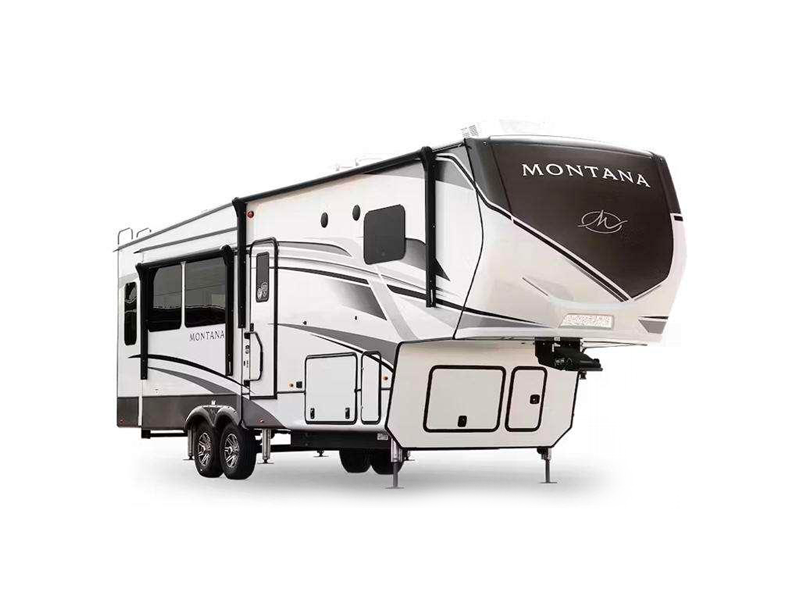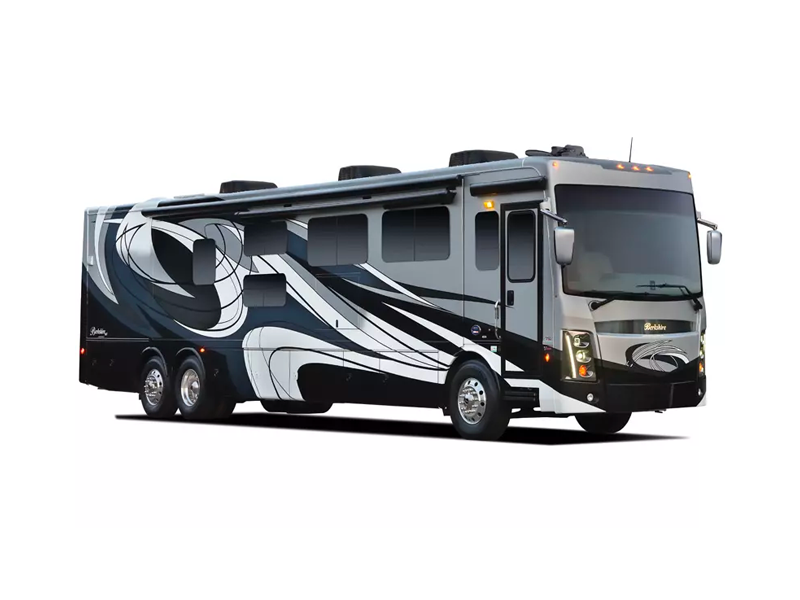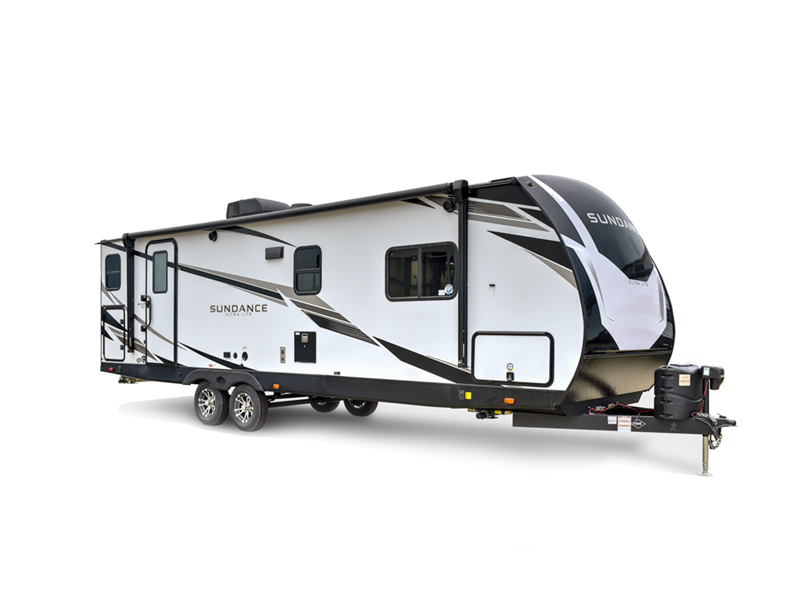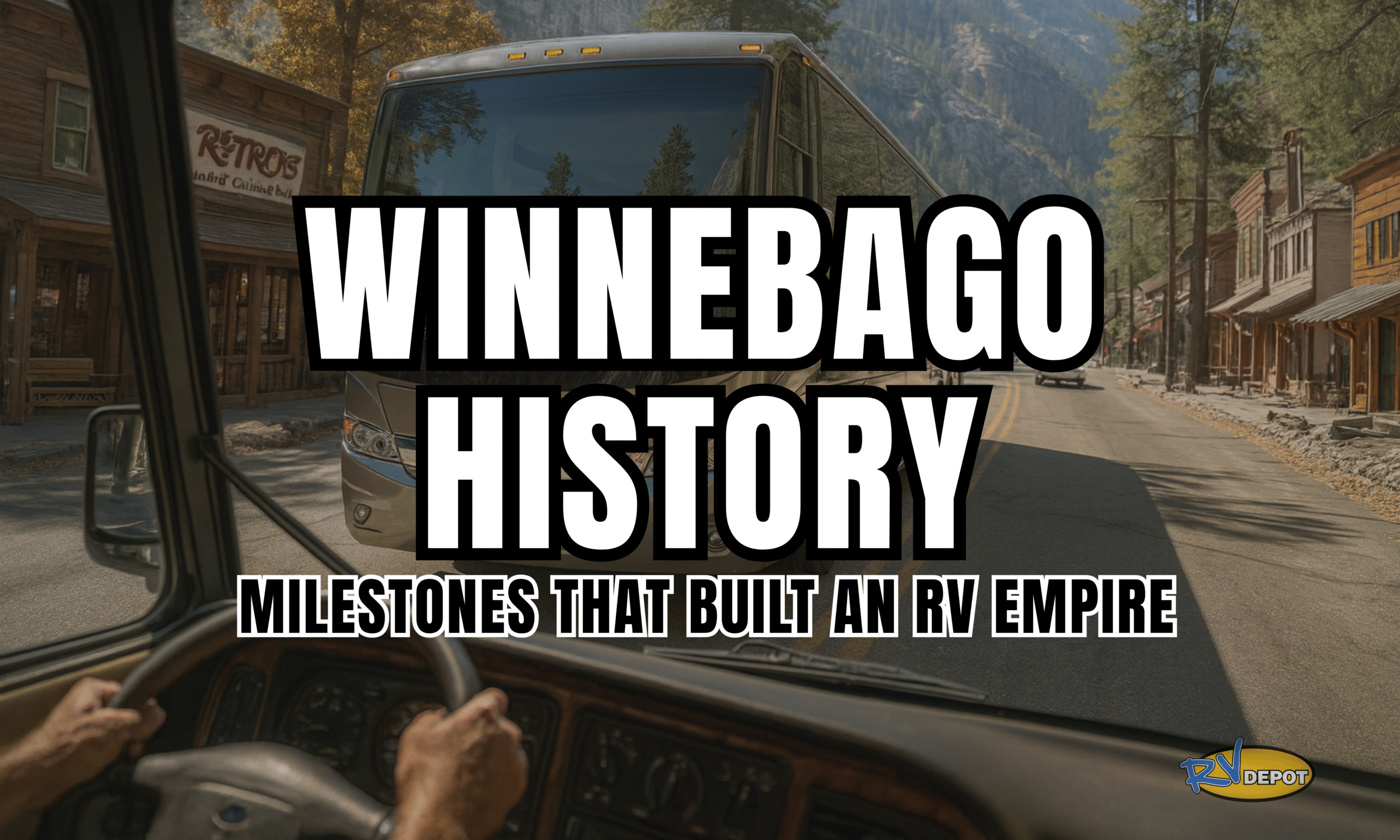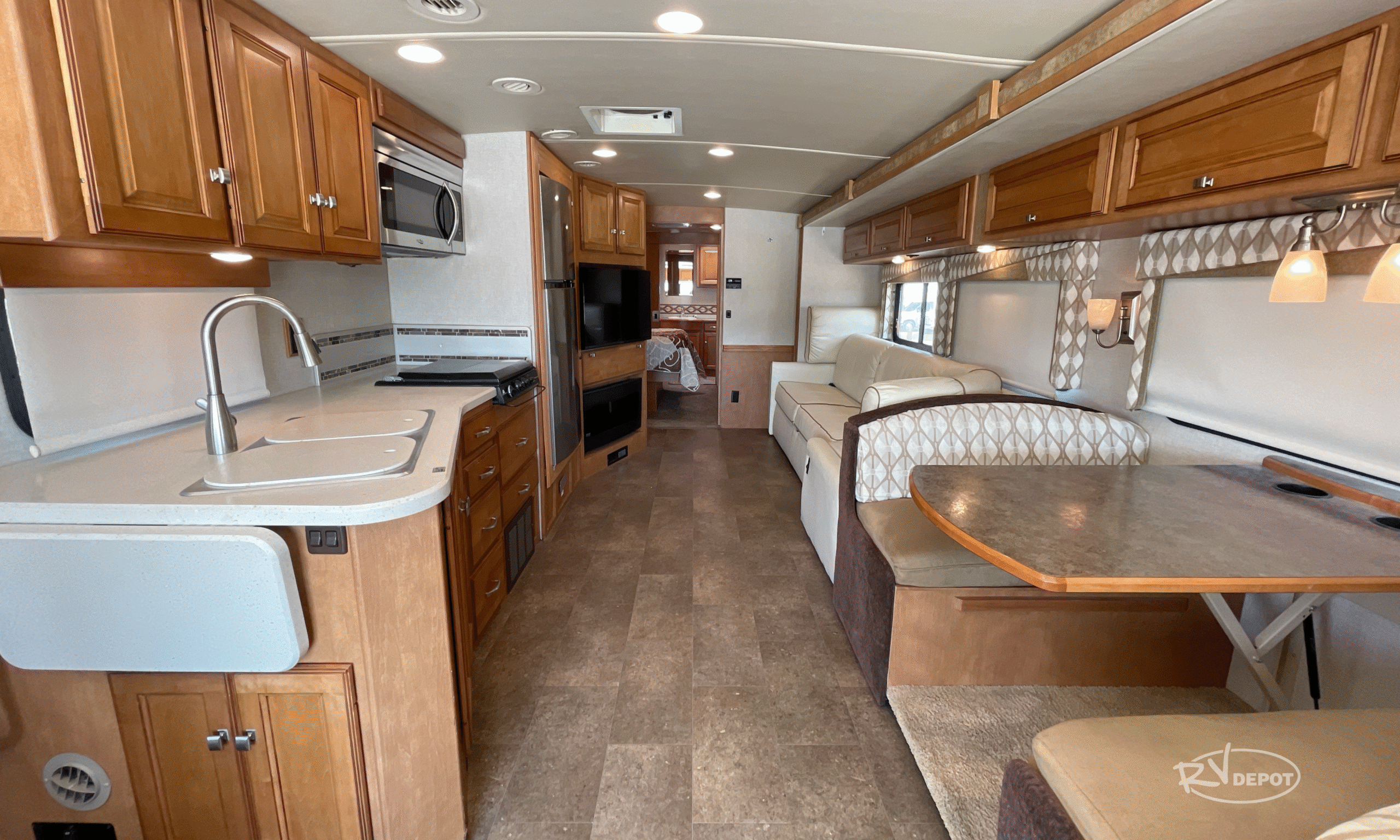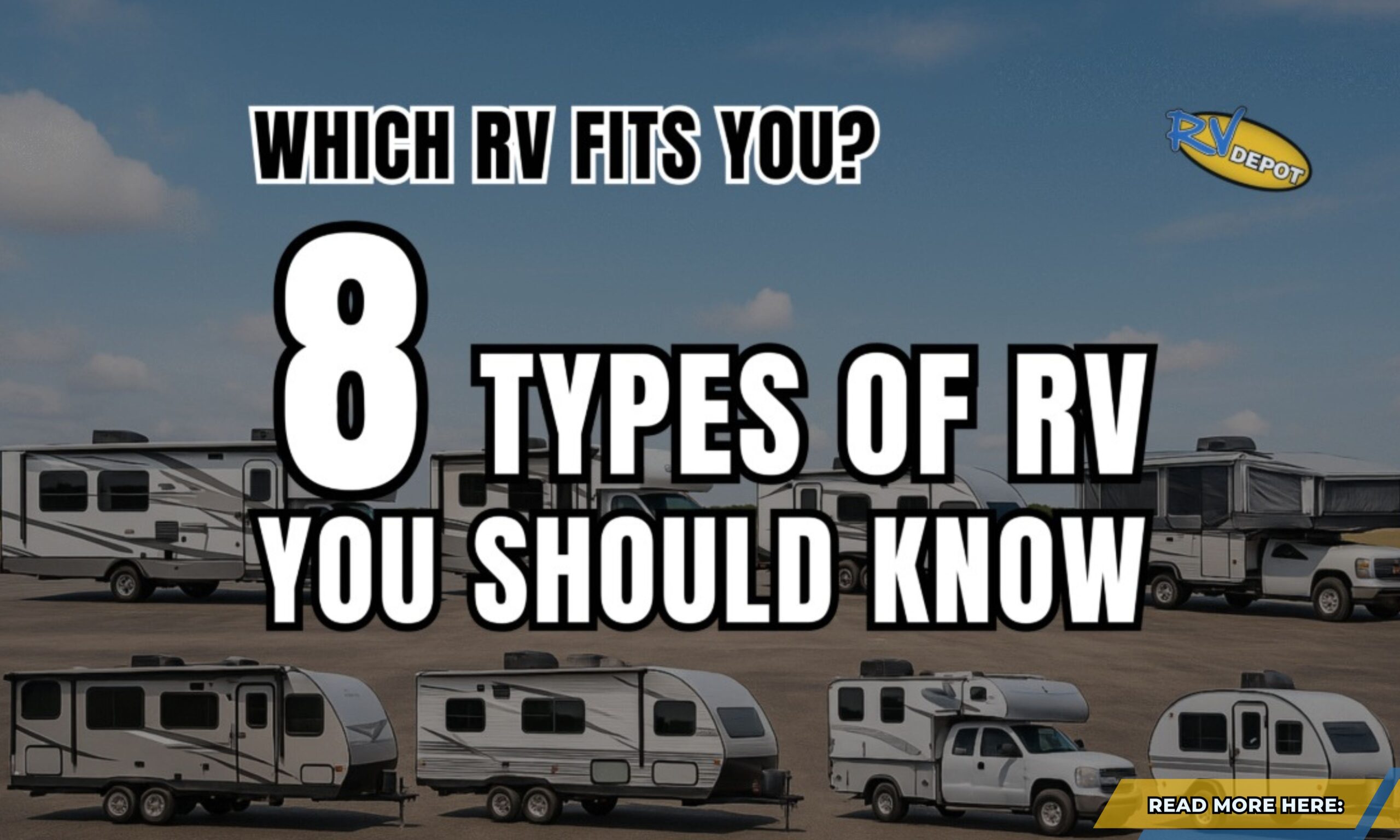The name “Winnebago” has become so synonymous with RV travel that many people call all motorhomes “Winnebagos,” regardless of manufacturer. This iconic status didn’t happen overnight—it’s the result of 65+ years of innovation, quality manufacturing, and an unwavering commitment to making RV travel accessible to American families. The Winnebago history is a story of vision, perseverance, and the relentless pursuit of excellence that transformed a small Iowa factory into America’s most recognizable RV brand.
From a humble 15-foot trailer selling for $895 in 1958 to today’s cutting-edge electric RV prototypes, Winnebago history reflects the evolution of American recreation and travel. The company has survived economic downturns, adapted to changing consumer preferences, and consistently pioneered innovations that shaped the entire RV industry. Understanding this history helps explain why Winnebago remains the gold standard for RV quality and innovation.
The Winnebago history demonstrates how American entrepreneurship, combined with genuine innovation and quality focus, can create lasting value that transcends generations. Whether you’re considering your first RV purchase or you’re a longtime Winnebago owner, understanding this remarkable history provides insights into what makes the brand special and why it continues to lead the industry.
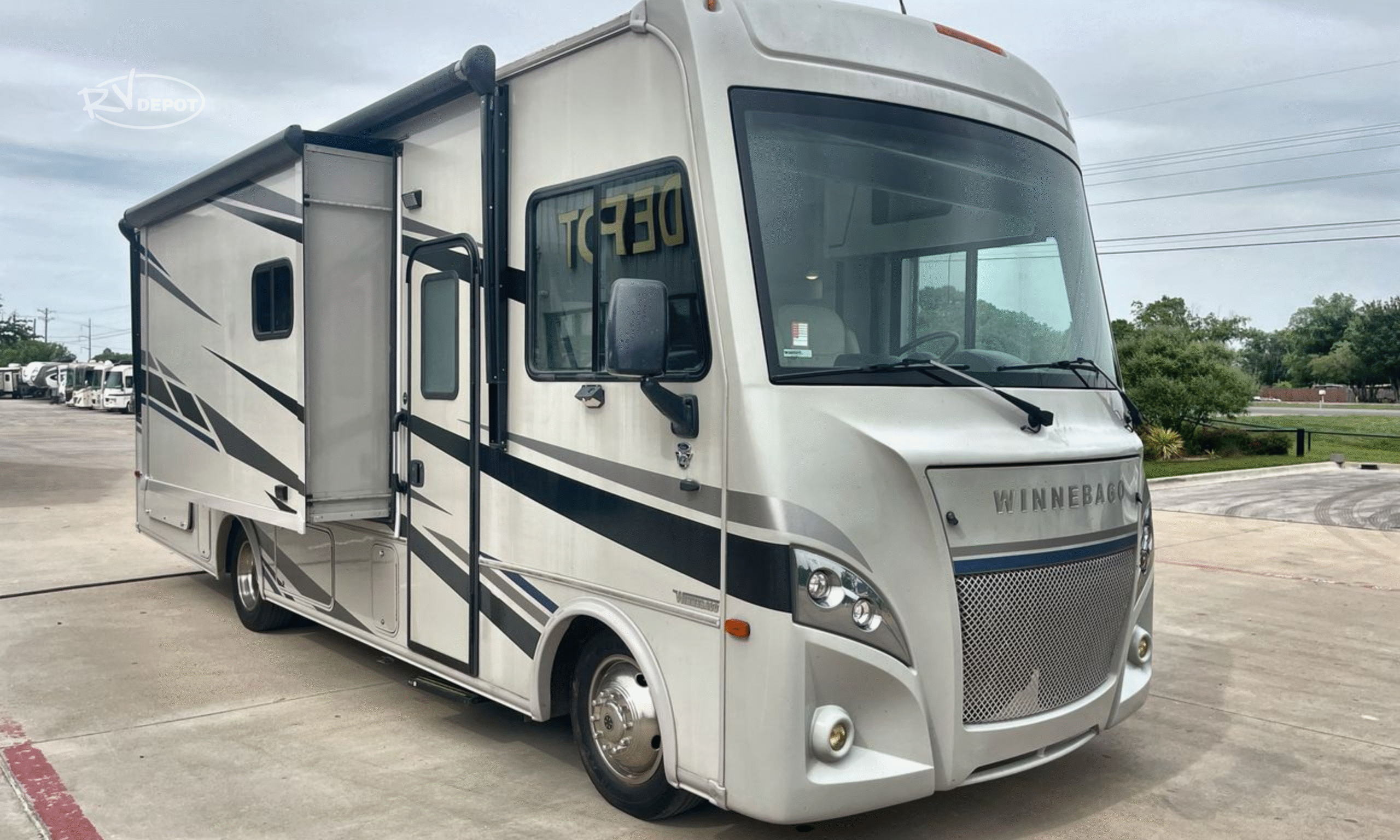
The Founding Vision: 1958-1961
John K. Hanson’s Revolutionary Idea
In 1958, Forest City, Iowa, was a small agricultural community with limited industrial opportunities. John K. Hanson, a local furniture dealer and entrepreneur, recognized an opportunity to bring manufacturing jobs to his hometown while pursuing his vision of making travel trailers more accessible to American families. His decision to relocate Modernistic Industries from California to Iowa would prove to be one of the most significant moves in RV industry history.
The Humble Beginning:
| Year | Milestone | Details |
|---|---|---|
| 1958 | Company founded | 17 employees, relocated from California |
| 1958 | First product | 15-foot towable trailer, $895 retail price |
| 1959 | Early growth | Expanded product line, increased production |
| 1960 | Market expansion | Dealer network development |
| 1961 | Company renamed | Became Winnebago Industries |
The $895 Trailer That Started It All: Hanson’s first 15-foot travel trailer represented exceptional value for 1958. Comparable trailers from established manufacturers cost $1,200-$1,500, making Winnebago’s offering 25-40% less expensive while maintaining quality standards. This value proposition became a cornerstone of Winnebago’s business strategy that continues today.
Why Forest City, Iowa? Hanson’s choice of Forest City proved strategic for several reasons. The rural Iowa location provided access to skilled craftspeople with strong work ethics, lower labor costs than coastal manufacturing centers, and a central location for efficient distribution throughout the Midwest. These advantages helped Winnebago maintain competitive pricing while building quality products.
Early Innovations and Market Development
From the beginning, Winnebago history was marked by continuous innovation and improvement. Hanson didn’t simply want to build travel trailers—he wanted to build better travel trailers that offered superior value, quality, and user experience.
Early Innovation Focus:
- Construction techniques using furniture-grade materials and methods
- Interior design emphasizing comfort and functionality
- Quality control processes ensuring consistent manufacturing
- Customer feedback integration into product development
- Dealer support programs for better customer service
Market Positioning Strategy: Winnebago positioned itself as the “quality value” choice in the travel trailer market. Rather than competing on price alone or pursuing luxury positioning, the company focused on delivering the best possible product at fair prices. This strategy attracted middle-class families who wanted quality RVs without premium pricing.
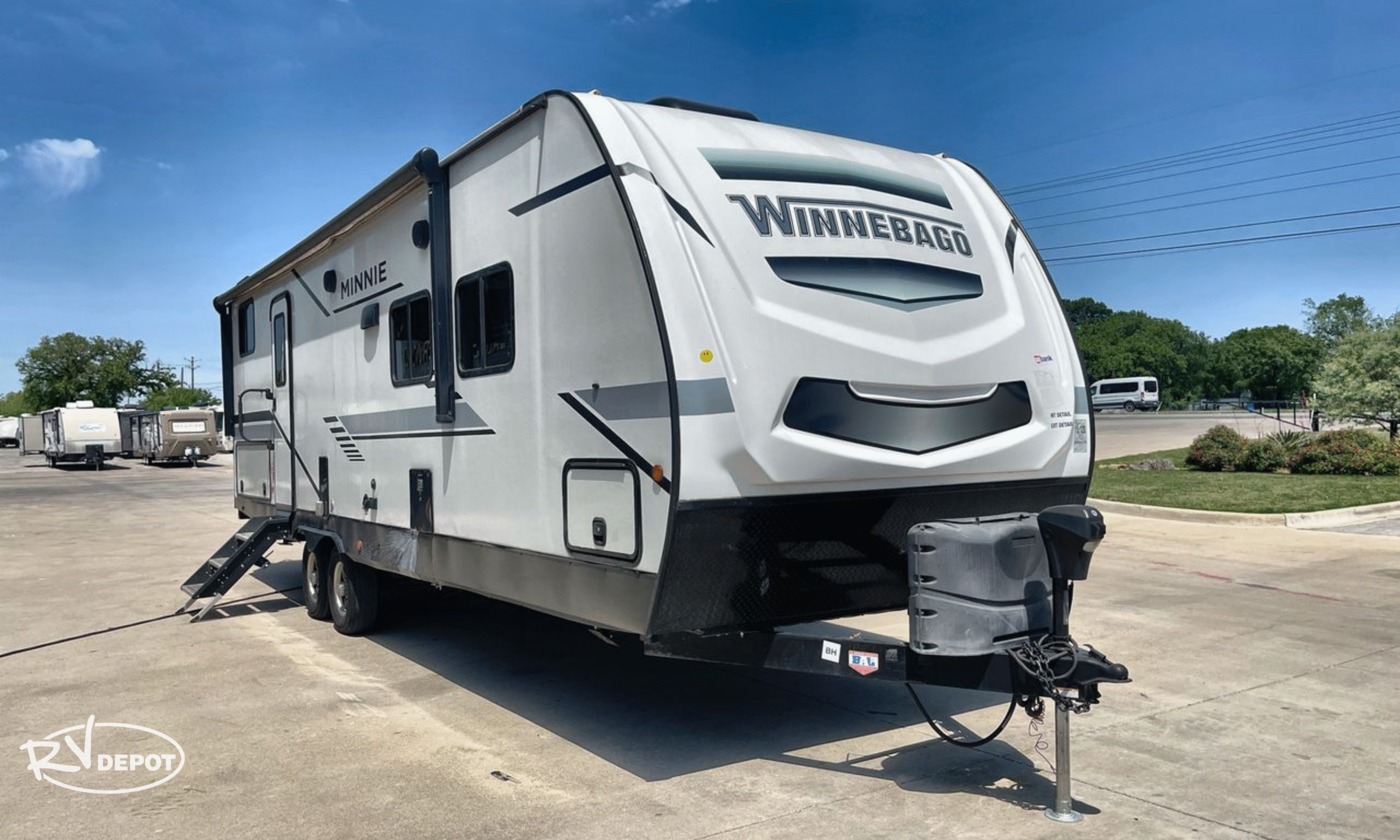
The Motorhome Revolution: 1966-1970
Pioneering Self-Contained Motorhomes
The mid-1960s marked a pivotal moment in Winnebago history when the company made the strategic decision to enter the motorhome market. This wasn’t simply adding another product line—it was pioneering an entirely new category of recreational vehicle that would transform American travel.
Motorhome Development Timeline:
| Year | Model | Innovation | Impact |
|---|---|---|---|
| 1966 | F-19 | First Winnebago motorhome, Ford chassis | Established motorhome credibility |
| 1967 | D22 | Dodge chassis, improved layout | Expanded customer base |
| 1968 | F-20 | Enhanced features, better integration | Market leadership position |
| 1969 | Chieftain | Built-in vacuum, engine hot water | Industry standard-setter |
The F-19: Breaking New Ground: Winnebago’s first motorhome, the F-19, represented a fundamental shift in RV design philosophy. Instead of simply mounting a trailer body on a truck chassis, Winnebago engineers integrated the living space with the driving compartment, creating a unified vehicle that was both comfortable and functional.
Revolutionary Features:
- Integrated design connecting cab and living areas
- Self-contained systems for water, waste, and electrical
- Automotive-grade construction for road durability
- Streamlined exterior for improved aerodynamics
- Standardized components for easier maintenance
The Chieftain: Setting Industry Standards
The 1969 Chieftain represented the culmination of Winnebago’s early motorhome development and established features that became industry standards. This model demonstrated that motorhomes could offer genuine home-like comfort while maintaining automotive reliability and performance.
Chieftain Innovations:
- Built-in vacuum system connected to engine power
- Engine-heated hot water using coolant circulation
- Integrated electrical systems with automotive-grade wiring
- Standardized floor plans enabling efficient production
- Quality control processes ensuring consistent manufacturing
Market Impact: By 1970, Winnebago had established itself as the leading motorhome manufacturer in the United States. The company’s innovative approach, quality focus, and competitive pricing had created a new market segment that attracted families who previously couldn’t afford or weren’t interested in traditional RV travel.
Overcoming Challenges: 1970s Energy Crisis
Innovation Through Adversity
The 1970s tested Winnebago’s resilience as the company faced the most challenging period in its history. The 1973 oil embargo and subsequent energy crisis created a perfect storm of high fuel costs, economic uncertainty, and dramatically reduced demand for recreational vehicles. Many RV manufacturers failed during this period, but Winnebago’s response demonstrated the innovation and adaptability that would define the company’s character.
Crisis Response Strategy:
| Challenge | Winnebago Response | Result |
|---|---|---|
| High fuel costs | Developed fuel-efficient designs | Maintained market share |
| Reduced demand | Innovative marketing campaigns | Sustained brand awareness |
| Economic uncertainty | Diversified product lines | Reduced market risk |
| Competition | Enhanced quality and features | Strengthened market position |
The 1974 World’s Fair Innovation: Winnebago’s “Winnebago Village” at the 1974 World’s Fair in Spokane, Washington, represented a brilliant marketing strategy that turned crisis into opportunity. By exposing millions of visitors to the RV lifestyle, Winnebago generated valuable market research while maintaining brand visibility during difficult economic times.
Product Innovation Focus: The Winnie Wagon, introduced in 1974, marked the beginning of what would become today’s Class B and C motorhome categories. This smaller, more fuel-efficient design addressed consumer concerns about fuel economy while maintaining Winnebago quality and features.
Building Market Leadership
Despite economic challenges, the 1970s saw Winnebago solidify its position as the industry leader through continuous innovation and strategic market development. The company’s ability to adapt to changing conditions while maintaining quality standards demonstrated the strength of its business model.
Key 1970s Achievements:
- Minnie Winnie introduction creating new market segment
- 100,000th motorhome production milestone in 1977
- Dealer network expansion improving customer access
- Quality system development ensuring consistent manufacturing
- Brand recognition achieving household name status
Long-term Strategic Impact: The 1970s crisis response established patterns that would serve Winnebago well in future challenges. The company’s focus on innovation, quality, and customer value created a resilient business model that could adapt to changing market conditions while maintaining its core values.
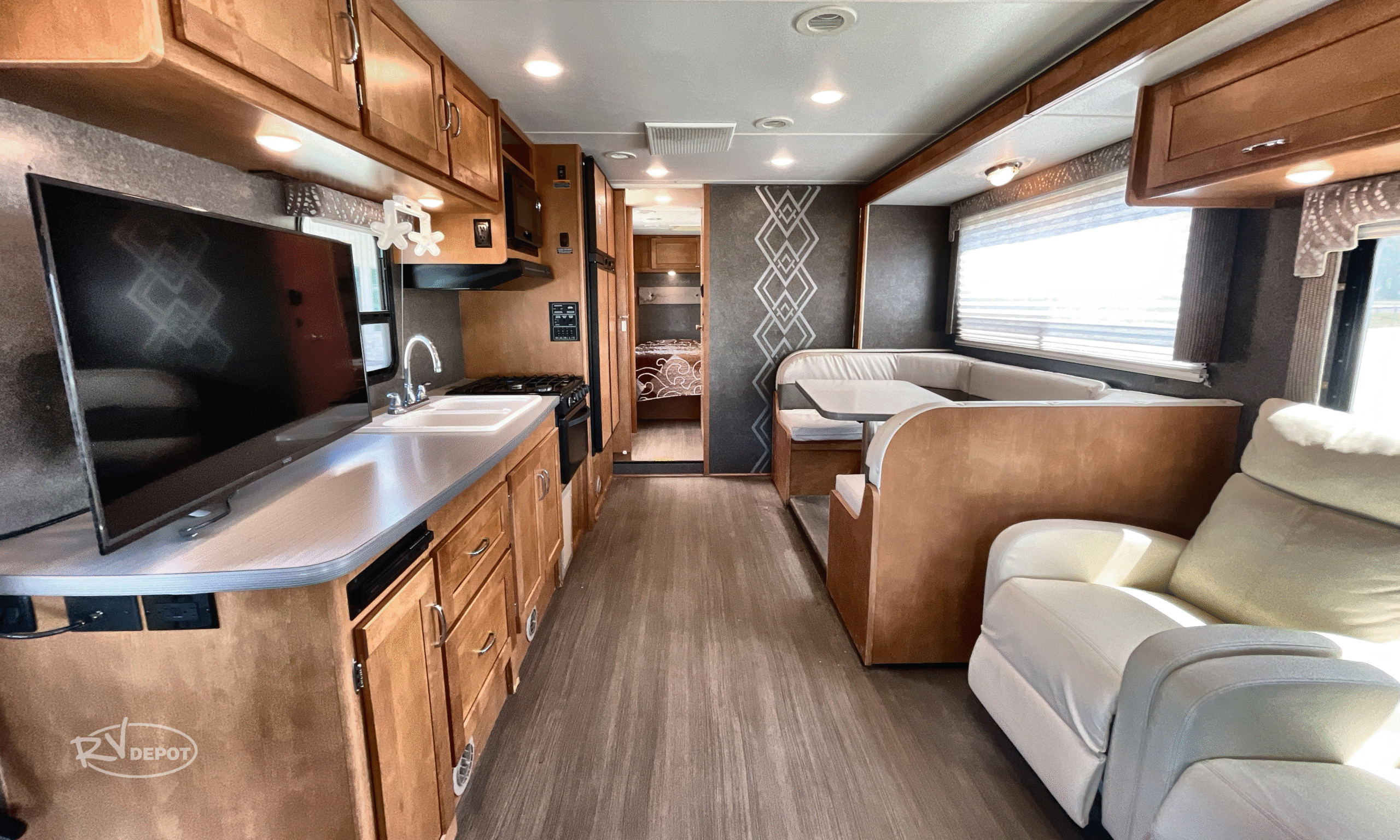
Efficiency and Expansion: 1980s Growth
Fuel Efficiency Leadership
The 1980s marked a period of technological advancement and market expansion for Winnebago. Having survived the energy crisis of the 1970s, the company emerged stronger and more focused on efficiency, innovation, and international opportunities.
Fuel Efficiency Achievements:
| Model | Year | Fuel Economy | Innovation |
|---|---|---|---|
| Warrior | 1980 | 18-20 mpg | Compact design, efficient engines |
| Itasca Spectrum | 1981 | 16-18 mpg | Aerodynamic improvements |
| Lesharo | 1983 | 22+ mpg | Volkswagen chassis integration |
| Phasar | 1983 | 22+ mpg | Advanced drivetrain technology |
The Lesharo and Phasar Success: These models represented Winnebago’s commitment to fuel efficiency without sacrificing livability. By partnering with Volkswagen and utilizing advanced European chassis technology, Winnebago achieved fuel economy figures that nearly doubled previous motorhome performance.
International Expansion: Winnebago’s 1988 agreement with Mitsubishi Corporation to sell and service Winnebago motorhomes in Japan marked the company’s first significant international expansion. This partnership validated Winnebago’s quality standards on a global scale and demonstrated the universal appeal of American RV innovation.
Production Milestones and Market Dominance
The 1980s saw Winnebago achieve significant production milestones that underscored its industry leadership. The company’s 30th anniversary in 1988 coincided with the production of its 200,000th motorhome, demonstrating sustained growth and market acceptance.
Growth Indicators:
- Production capacity doubled from 1970s levels
- Dealer network expanded to over 500 locations
- Product line diversified across multiple market segments
- Quality systems achieved industry-leading standards
- Brand recognition reached peak market awareness
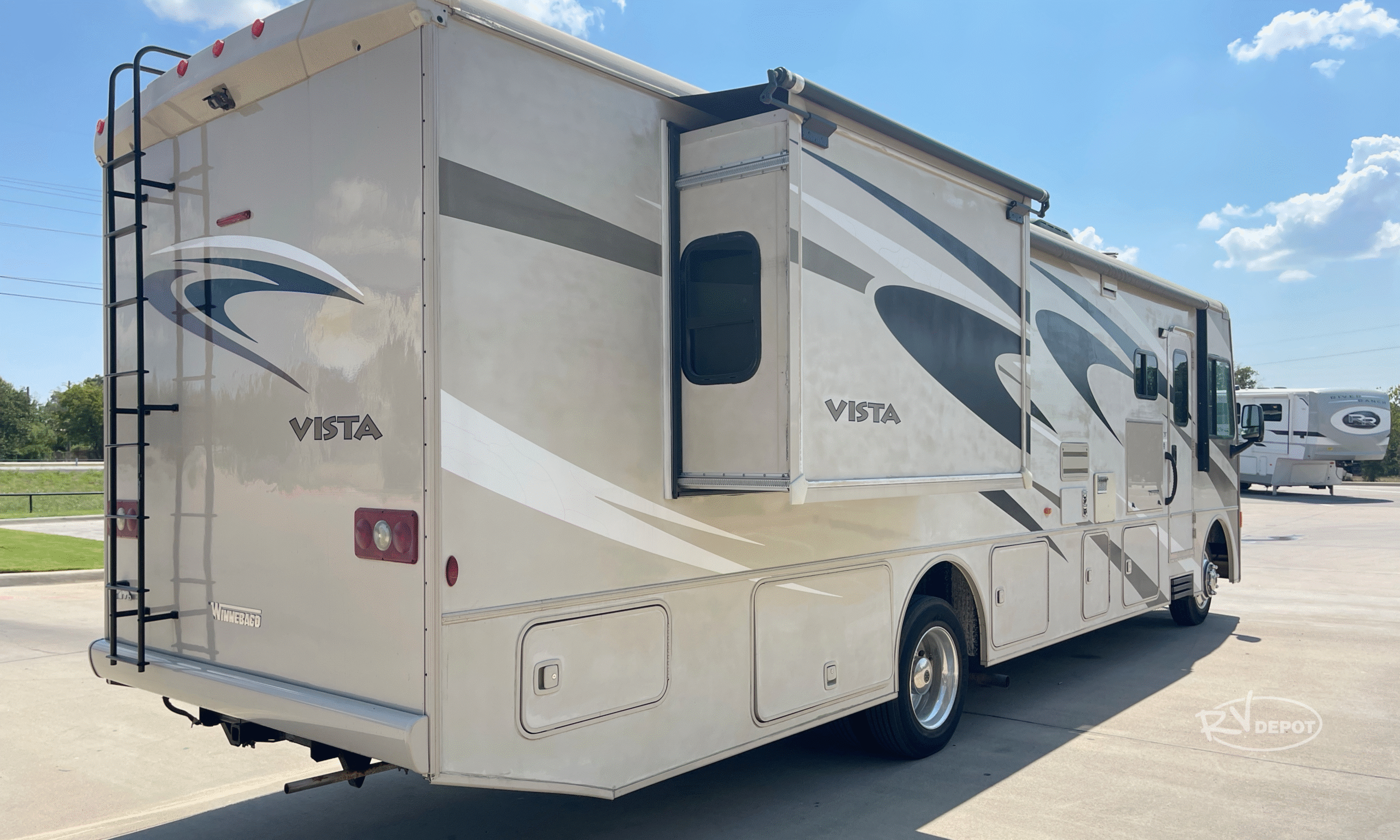
Innovation and Diversification: 1990s Excellence
Cult Classic Models and Market Expansion
The 1990s represented a golden age of Winnebago innovation, with the company introducing several models that would achieve cult classic status among RV enthusiasts. This decade saw Winnebago master the art of niche marketing while maintaining its position as the industry’s volume leader.
Iconic 1990s Models:
| Model | Launch Year | Unique Features | Market Impact |
|---|---|---|---|
| Rialta | 1994 | Volkswagen chassis, European styling | Created new market segment |
| Warrior | 1990 | Toyota chassis, exceptional fuel economy | Budget-conscious families |
| Luxor | 1995 | Diesel pusher, luxury features | Premium market entry |
| Spirit Micro Mini | 1992 | Compact design, affordable pricing | Entry-level market |
The Rialta Phenomenon: Built on a Volkswagen chassis, the Rialta represented Winnebago’s boldest design departure. Its European styling, compact size, and exceptional fuel economy attracted buyers who had never considered RVs before. The Rialta’s success demonstrated Winnebago’s ability to innovate beyond traditional market boundaries.
Production Excellence: The 1990s culminated with Winnebago producing its 300,000th motorhome in 1998, marking another significant milestone in the company’s history. This achievement reflected consistent growth and market leadership over four decades.
Technology Integration and Quality Advancement
The 1990s saw Winnebago integrate new technologies and manufacturing processes that improved both product quality and production efficiency. The company’s investment in advanced manufacturing equipment and quality control systems positioned it well for the challenges of the new millennium.
Technological Advancements:
- Computer-aided design systems for improved product development
- Advanced manufacturing equipment for consistent quality
- Quality control systems ensuring defect-free production
- Supplier partnerships improving component quality
- Customer feedback integration for continuous improvement
New Millennium Success: 2000s Innovation
Record-Breaking Performance
The 2000s marked unprecedented success in Winnebago history, with the company achieving record sales, recognition, and production milestones that validated decades of innovation and quality focus.
2000s Achievements:
| Year | Milestone | Significance |
|---|---|---|
| 2004 | Sales exceed $1 billion | First time in company history |
| 2004 | “Most-admired RV manufacturer” | Industry recognition |
| 2008 | 400,000th unit produced | Production milestone |
| 2008 | 50th anniversary celebration | Company longevity |
The Mercedes-Benz Sprinter Revolution: Winnebago’s adoption of the Mercedes-Benz Sprinter chassis in 2005 revolutionized the Class B and C markets. Models like the View and Navion set new standards for efficiency, performance, and European-inspired design that influenced the entire industry.
Market Leadership Validation: The 2000s success validated Winnebago’s long-term strategies and positioned the company as the undisputed leader in American RV manufacturing. The combination of sales records, industry recognition, and production milestones demonstrated the strength of the Winnebago brand.
Foundation for Future Innovation
The 2000s established the foundation for Winnebago’s current success by developing the systems, processes, and market positions that would enable the company to thrive in the rapidly changing RV market of the 2010s and beyond.
Strategic Foundations:
- Brand strength achieving maximum market recognition
- Quality systems ensuring consistent customer satisfaction
- Innovation capabilities enabling rapid product development
- Market positioning across all RV segments
- Financial strength supporting future growth and development
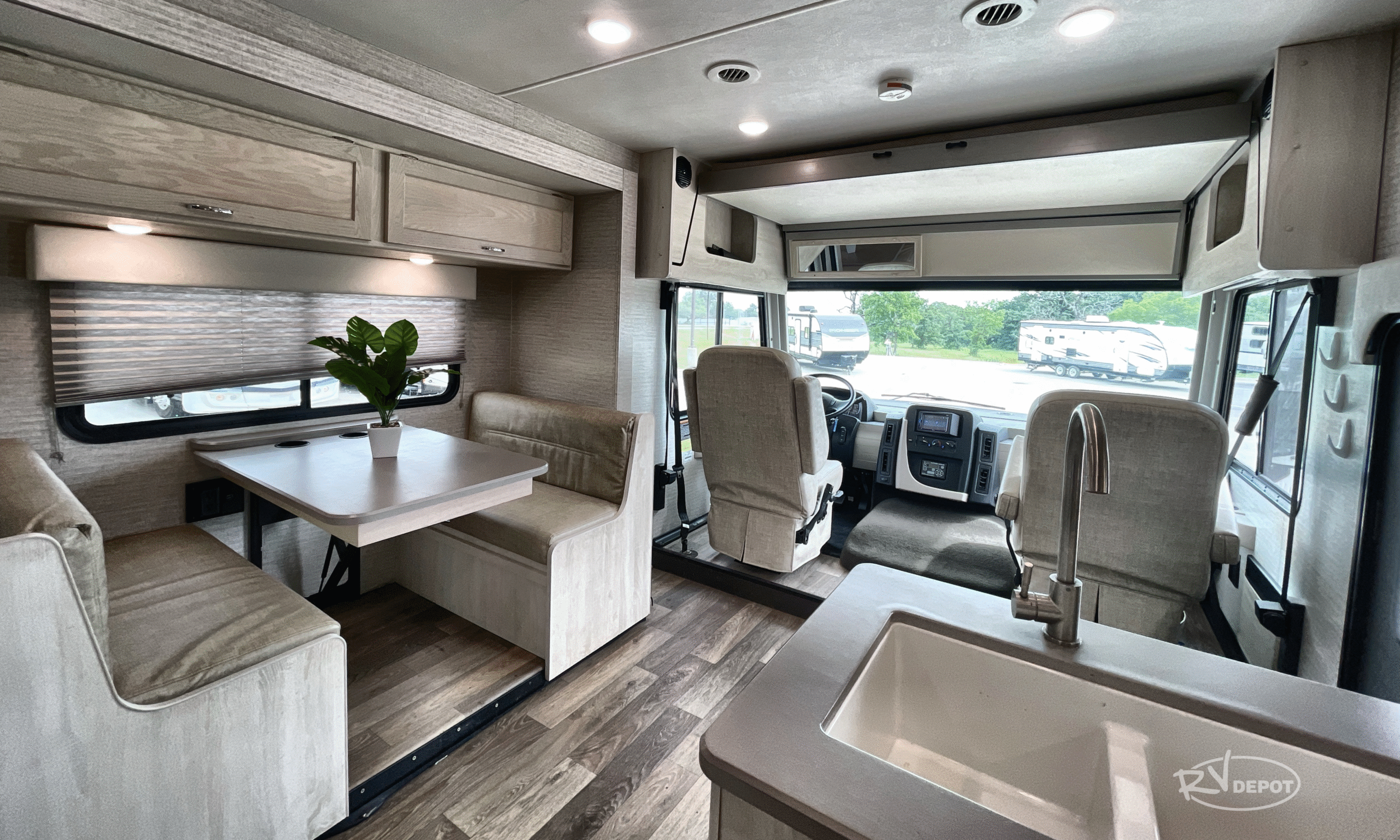
Return to Roots: 2010s Expansion
Towable Market Re-entry
The 2010s marked Winnebago’s strategic return to its towable roots with the acquisition of Sunnybrook RV in 2010 and the creation of Winnebago Towables. This move demonstrated the company’s commitment to serving the complete RV market while leveraging its brand strength across all product categories.
Towable Strategy Success:
| Year | Development | Market Impact |
|---|---|---|
| 2010 | Sunnybrook acquisition | Immediate towable market entry |
| 2011 | Winnebago Towables launch | Brand extension success |
| 2012 | Product line expansion | Market share growth |
| 2014 | Travato introduction | Campervan market leadership |
The Travato Phenomenon: Launched in 2014 on the RAM ProMaster chassis, the Travato quickly became North America’s top-selling campervan. This success demonstrated Winnebago’s ability to identify and dominate emerging market segments while maintaining its quality and innovation standards.
Adventure Market Leadership
The 2010s saw Winnebago anticipate and lead the adventure RV market that would explode in popularity during the 2020s. The company’s investment in capable, adventure-ready RVs positioned it perfectly for the outdoor recreation boom that followed.
Adventure RV Development:
- Revel launch (2018) on 4×4 Mercedes-Benz Sprinter chassis
- Adventure-ready features for off-grid camping and exploration
- Rugged construction for challenging travel conditions
- Integrated systems for extended self-sufficiency
- Market segment creation inspiring competitor development
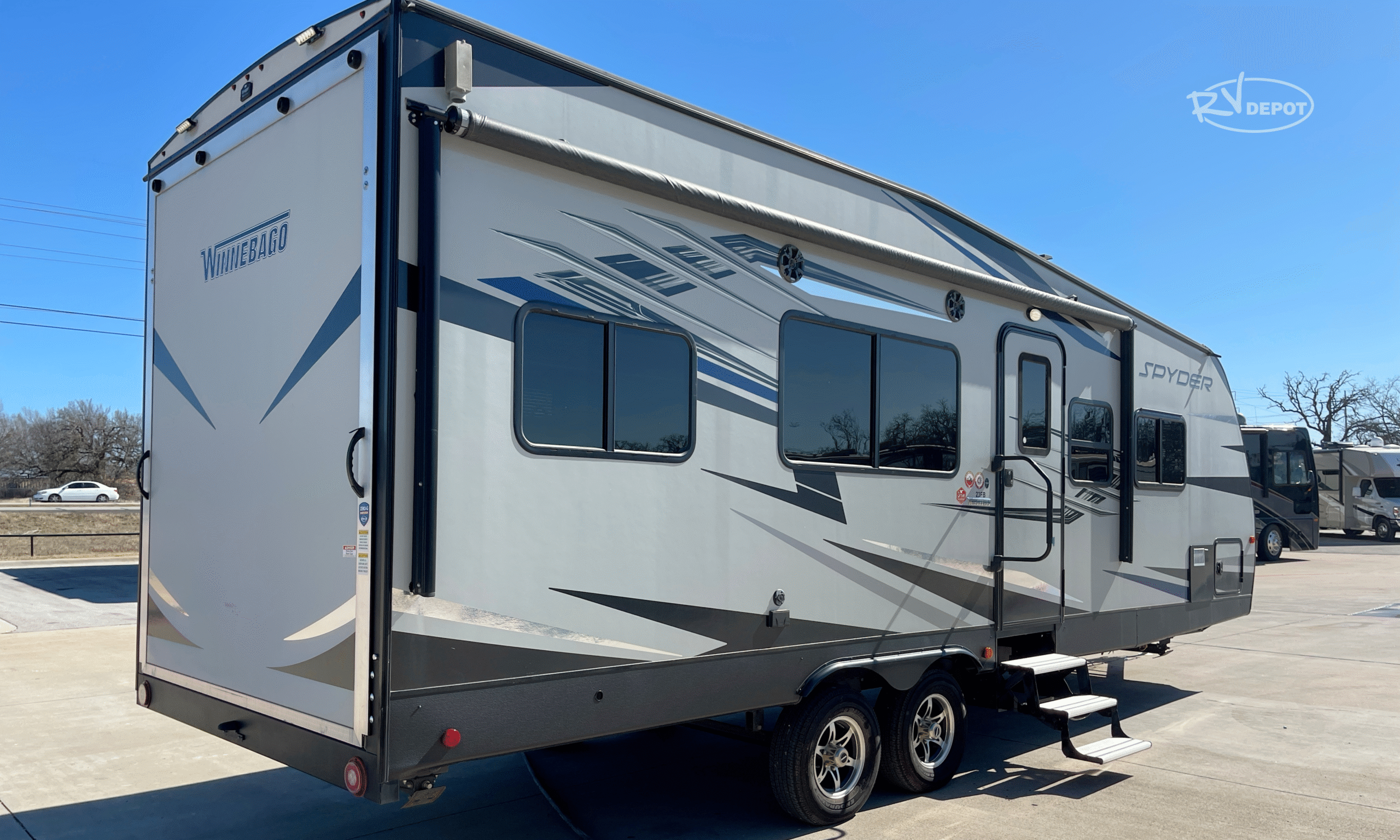
Modern Era: 2020s Innovation
Sustainable Future Vision
The 2020s have seen Winnebago continue its innovation leadership while embracing sustainability and environmental responsibility. The company’s commitment to electric RV development demonstrates its forward-thinking approach to industry challenges and opportunities.
Recent Innovation Milestones:
| Year | Innovation | Significance |
|---|---|---|
| 2020 | EKKO introduction | All-season Class C advancement |
| 2020 | Diesel production facility | Manufacturing capability expansion |
| 2022 | 500,000th motorhome | Production milestone (Revel) |
| 2023 | eRV2 prototype | First all-electric RV |
The eRV2 Electric Revolution: Winnebago’s eRV2 prototype represents the future of sustainable RV travel. Built on the Ford E-Transit chassis with proprietary IonBlade lithium battery technology, the eRV2 demonstrates zero-emission capabilities while maintaining the quality and functionality that define Winnebago products.
Sustainability Leadership: The eRV2 positions Winnebago as the leader in sustainable RV development, demonstrating the company’s commitment to environmental responsibility while maintaining its focus on innovation and customer value.
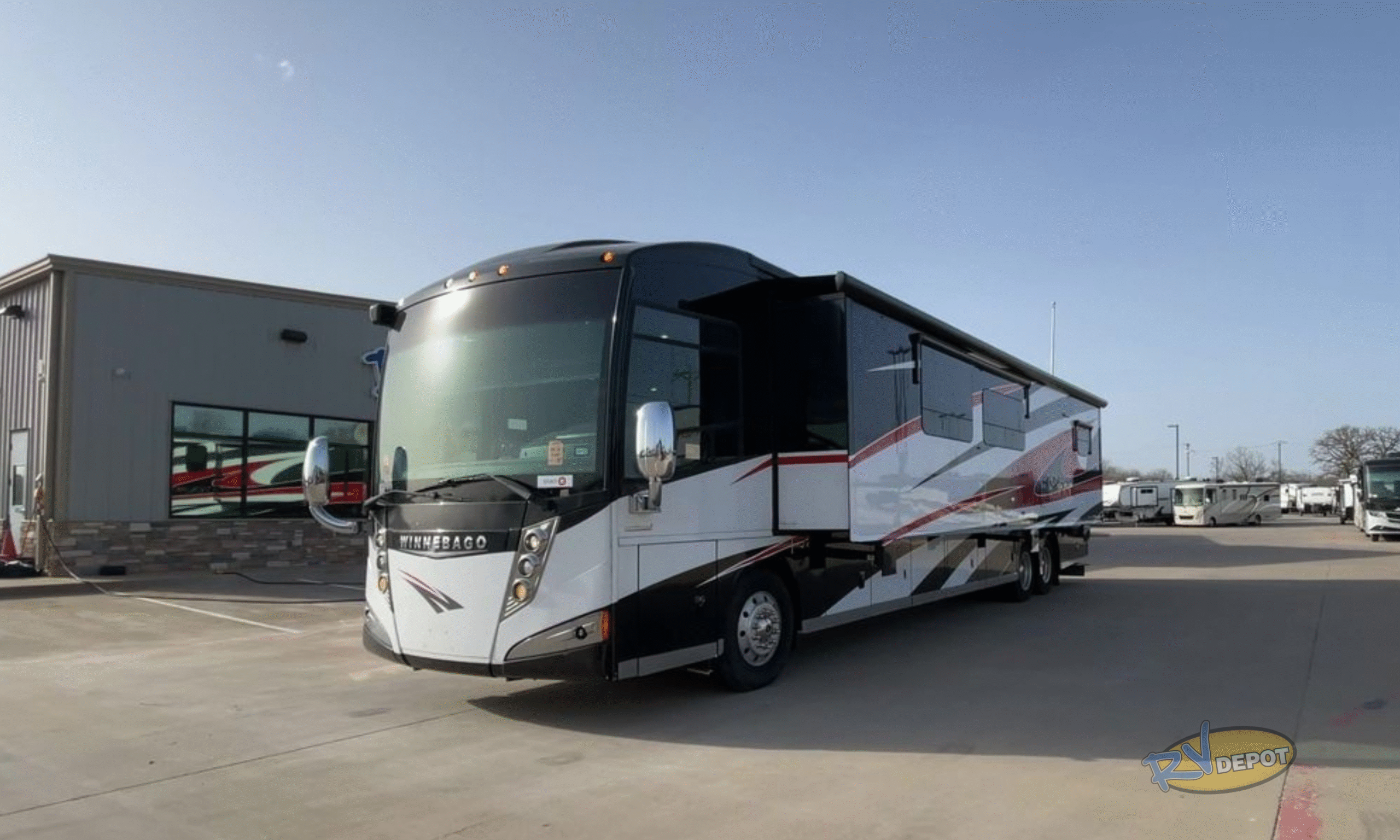
Winnebago’s Lasting Legacy and Future Vision
What Makes Winnebago Special
The Winnebago history reveals consistent themes that explain the company’s enduring success and industry leadership. Understanding these elements helps explain why Winnebago continues to set industry standards and attract loyal customers across generations.
Core Success Factors:
| Factor | Historical Evidence | Modern Application |
|---|---|---|
| Innovation | First integrated motorhome design | Electric RV development |
| Quality | Consistent manufacturing standards | Industry-leading warranties |
| Value | Competitive pricing with premium features | Best-in-class resale values |
| Customer Focus | Continuous product improvement | Extensive dealer network |
| Adaptability | Survived multiple economic crises | Diversified product portfolio |
Brand Strength and Recognition: The Winnebago name has become synonymous with quality RV travel in American culture. This brand strength, built over 65+ years of consistent performance, provides competitive advantages that extend far beyond product features and pricing.
Manufacturing Excellence: Winnebago’s Forest City, Iowa manufacturing facility represents one of the most advanced RV production operations in the world. The company’s investment in modern manufacturing equipment, quality control systems, and employee training ensures consistent product quality that meets customer expectations.
Future Innovation Trajectory
Winnebago’s history of innovation provides insights into the company’s future direction and capabilities. The patterns established over 65+ years suggest continued leadership in emerging technologies and market segments.
Innovation Patterns:
- Early adoption of new technologies and materials
- Market segment creation through innovative product development
- Quality focus maintaining standards regardless of market pressures
- Customer value balancing features with affordability
- Sustainability incorporating environmental responsibility
Electric and Sustainable Future: The eRV2 prototype represents just the beginning of Winnebago’s electric RV development. The company’s commitment to sustainable travel solutions positions it to lead the industry through the transition to electric powertrains and renewable energy systems.
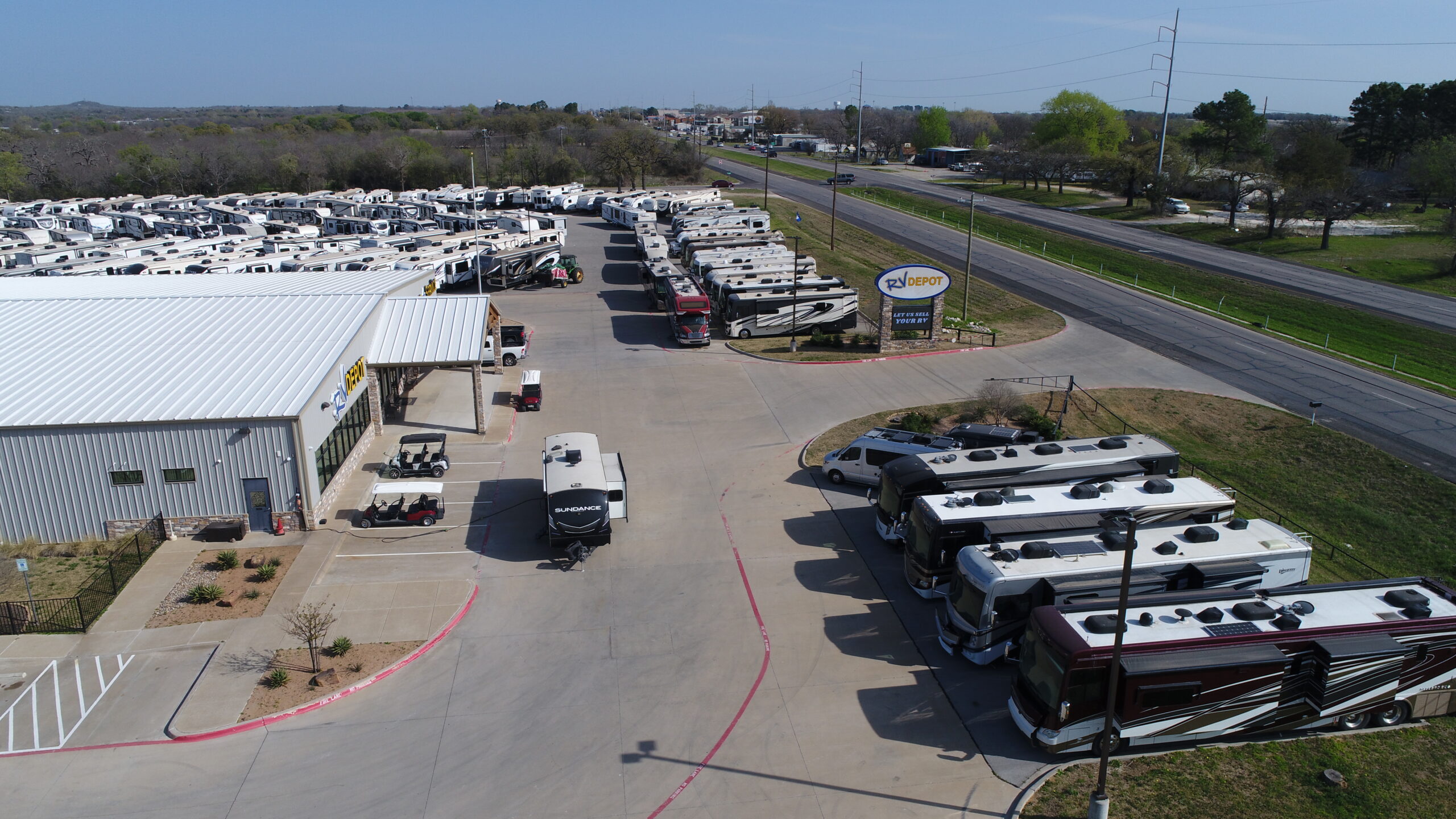
Your Winnebago Story Begins Here
The Winnebago history is ultimately a story about enabling dreams and creating opportunities for adventure, family time, and personal freedom. From John K. Hanson’s original vision in 1958 to today’s cutting-edge electric RV prototypes, the company has consistently focused on making RV travel accessible, enjoyable, and reliable for American families.
Understanding this history helps explain why Winnebago continues to lead the industry in innovation, quality, and customer satisfaction. When you choose a Winnebago, you’re not just buying an RV—you’re becoming part of a legacy that spans over six decades of excellence and innovation.
Ready to become part of Winnebago history? Visit RV Depot at 4319 N. Main St, Cleburne, TX, where our Winnebago specialists can help you find the perfect model to start your own adventure story. From compact Travatos to adventure-ready Revels, we have the complete Winnebago lineup ready for your exploration.
📍 Visit: 4319 N. Main St, Cleburne, TX 76033 📱 Call or text: (817) 678-5133 💻 Browse Inventory: rvdepottx.com
The Winnebago history continues with every new owner who discovers the freedom, quality, and adventure that the brand has provided for over 65 years. Let RV Depot help you write your own chapter in this remarkable story.

